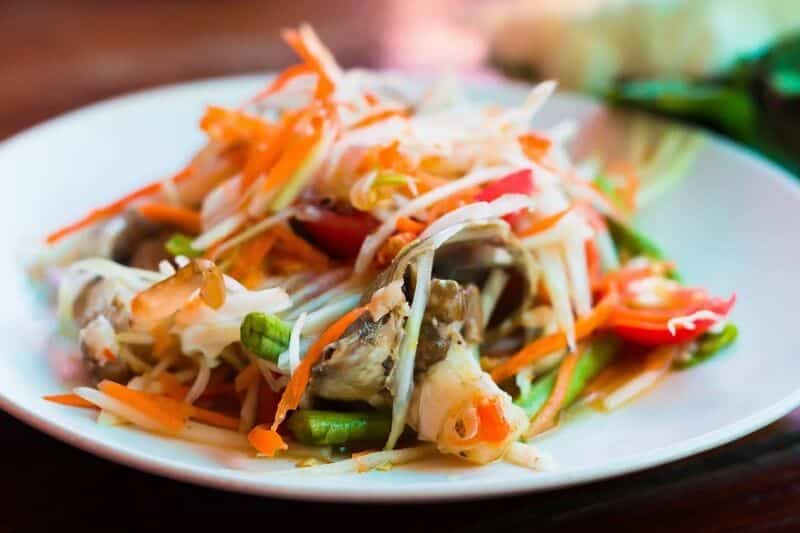The rise of Thai food trucks

Think about hanging out at a lively, energetic food truck festival where the delicious scent of Thai foods steals your senses, pulling in both residents and travel explorers. A warm welcome to Thailand’s foodie tourism sensation, where the humble street food is being cheered on to a star-like status. What’s more, it’s not just for the outright joy of pleasing your palate, but it’s also part of an amazing idea to boost local businesses and champion travel based on local communities.
The Thai Government is putting a creative spin on things. The idea is to take the traditional street food we all love and give it a cool makeover into a super awesome food truck style. The wheels are already in motion and the buzz is that a new Guinness World Record might just be in the making. And don’t forget that it’s not just about the food. There’s also great entertainment with mini gig festivals, lucky giveaways, and even a food truck championship on the cards.
Origin of Thai food trucks

Trends influencing popularity
With its surge in popularity, there are significant trends to highlight that contribute to the success of Thai food trucks in Thailand. Firstly, the ‘eat-local’ movement takes the lead. With people’s growing appreciation for locally sourced, fresh ingredients, these trucks ideally cater to this need, offering dishes that reflect Thailand’s rich culinary heritage.
Moreover, these food trucks tap into the nostalgia for authentic street food experience. Venturing beyond mere food, they captivate through their distinctive aesthetics—vibrant colours, intricate designs, and street-style setup—that reverberate the environment of traditional food markets.
Lastly, convenience remains a key catalyst in their rise. With their mobility, they offer easy food access to urban dwellers. Grabbing a quick bowl of Tom Yum soup or a plate of Pad Thai can merely be a street corner away.
The blend of tradition and modernity
Thai food trucks are a testament to the intricate blend of tradition and modernity. They take treasured recipes passed down through generations, combine them with fresh, local produce, and serve them in a contemporary setting.
These vehicles not only do transport, but they also embody the vibrant essence of the Thai culinary scene. More than just a trend, Thai food trucks pave the way for a dynamic, savoury street food experience, comfortably bridging the past with the present.
Key elements of a successful Thai food truck

When it comes to reinventing Thai street food experiences and venturing into the mobile culinary world, Thai food trucks bubble to the top. With a combination of tradition, modernity, and creativity, these mobile eateries are revolutionising the Thai street food scene. But what makes a Thai food truck successful? There are two major elements to consider.
Menu innovation
The heart of a successful Thai food truck lies in its menu. It begins, of course, with richly flavoured, authentic Thai recipes. Yet, innovation transforms these traditional dishes into unique, modern delights appealing to a wider audience. Take, for instance, the case of a new food truck anchored at Sala Daeng’s MK Gold parking lot. Resulting from a collaboration between French and Italian culinary powers, it offers an impressive pizza repertoire. Beyond the classic Margherita, it extends to fascinating flavours such as spicy Andouja and garlic, French-inspired Ratatouille, and baby squid Provençal, unequivocally demonstrating innovation in their menu offerings. The truck proves that a seamless meld of local authenticity and global sensibilities in its menu stands a food truck in good stead.
Location strategy
Regardless of how impressive the menu is, it’s accessibility that turns passersby into customers. A pivotal aspect of a successful Thai food truck is its strategic location. High-footfall areas such as malls, parking lots, popular tourist spots, and bustling marketplaces are ideal. For example, consider the food truck, Annette I Tim Tuk Tuk, stationed inside Siam Paragon – a popular mall. Its prime location inside a high-footfall area guarantees a steady stream of customers, thereby transforming its lip-smacking homemade gelato into a sought-after culinary treat. Another instance is the food truck in the Sala Daeng’s MK Gold parking lot. Easy accessibility via the BTS at Sala Daeng amplifies its popularity, highlighting the importance of a strategic location for a food truck’s success.
The impact on local food culture

Shift in dining preferences
As Thailand’s food landscape evolves, so have the preferences of its active diner community. The emergence of Thai food trucks reflects not just novelty; it signifies a shift in dining preferences. Their success lies in meeting the changed culinary needs—ones underscored by convenience, innovation, and packaged authenticity. For many urban dwellers and tourists, food trucks in Thailand have become popular dining options, converting bustling city corners into gastronomic adventures. This is due to their novel approach to presenting traditional Thai cuisine in a modern culinary context.
Influence on street food tradition
Street food in Thailand has long been a vivid tapestry of its rich food culture. Amid the changing food scenario, one may wonder about the impact of these food trucks on the traditional street food culture. Interestingly, instead of pushing the sidewalks to oblivion, Thai food trucks are breathing new life into the street food tradition. They are preserving the authenticity and flavour characterising the island’s streets while modernising the way it’s served and enjoyed. An apt example here is the Annette I Tim Tuk Tuk—offering homemade gelato served in retro-styled tuk tuks—and the Rolling Stone pizza truck with its mobile wood-fired oven. These Thai food trucks, while presenting a blend of old and new, ensure the street food tradition remains a significant part of Thailand’s local food culture.
Consumer insights

Interacting with Thai food trucks doesn’t only mean purchasing a meal; it’s a culturally immersive experience appreciated by various demographics.
Preferences and demographics
Your understanding of the Thai food truck customer base might get broader once you delve into it. Diversity is at the heart of the clientele, ranging from young, budget-conscious students to tourists seeking an authentic experience. Proficient in navigating bustling city routes to tranquil neighbourhoods, everyone enjoys the convenient, on-the-go dining option.
Further, Thai food trucks are attracting a significant health-conscious set. These customers are chasing local, fresh, and organic ingredients. On the flip side, food aficionados eager to indulge in traditional delights or experiment with contemporary offerings form another demographic. So, whether it’s a nostalgia-induced Thai iced tea or a modern reinterpretation of Pad Thai, Thai food trucks cater to a wide range of palates.
Customer feedback and engagement
Direct customer feedback is another positive outcome for Thai food trucks. As dining is an immersive affair, customer engagement and interaction in such an intimate environment yield valuable insights. These trucks, often family-run, are more accessible than a typical restaurant setup, fostering a friendly, approachable atmosphere that encourages dialogue.
Moreover, the advent of social media provides a platform for customers to share reviews, post photos and engage with food truck owners directly. This interaction, coupled with the fact that the food truck scene in Thailand remains largely community-centric, justifies why customer feedback stays high on the priority list. Besides acting as a valuable metric for business performance, real-time reviews further drive the acceptability and reputation of Thai food trucks.
You can also check out, Comfort foods to try during Thailand’s monsoon season, The monsoon season in Thailand offers refreshing rains and a vibrant culinary scene, attracting tourists to explore the rich variety of Thai cuisine, known for its spicy warmth and diverse flavours, providing comfort during rainy days.
Latest Thailand News
Follow The Thaiger on Google News:


























